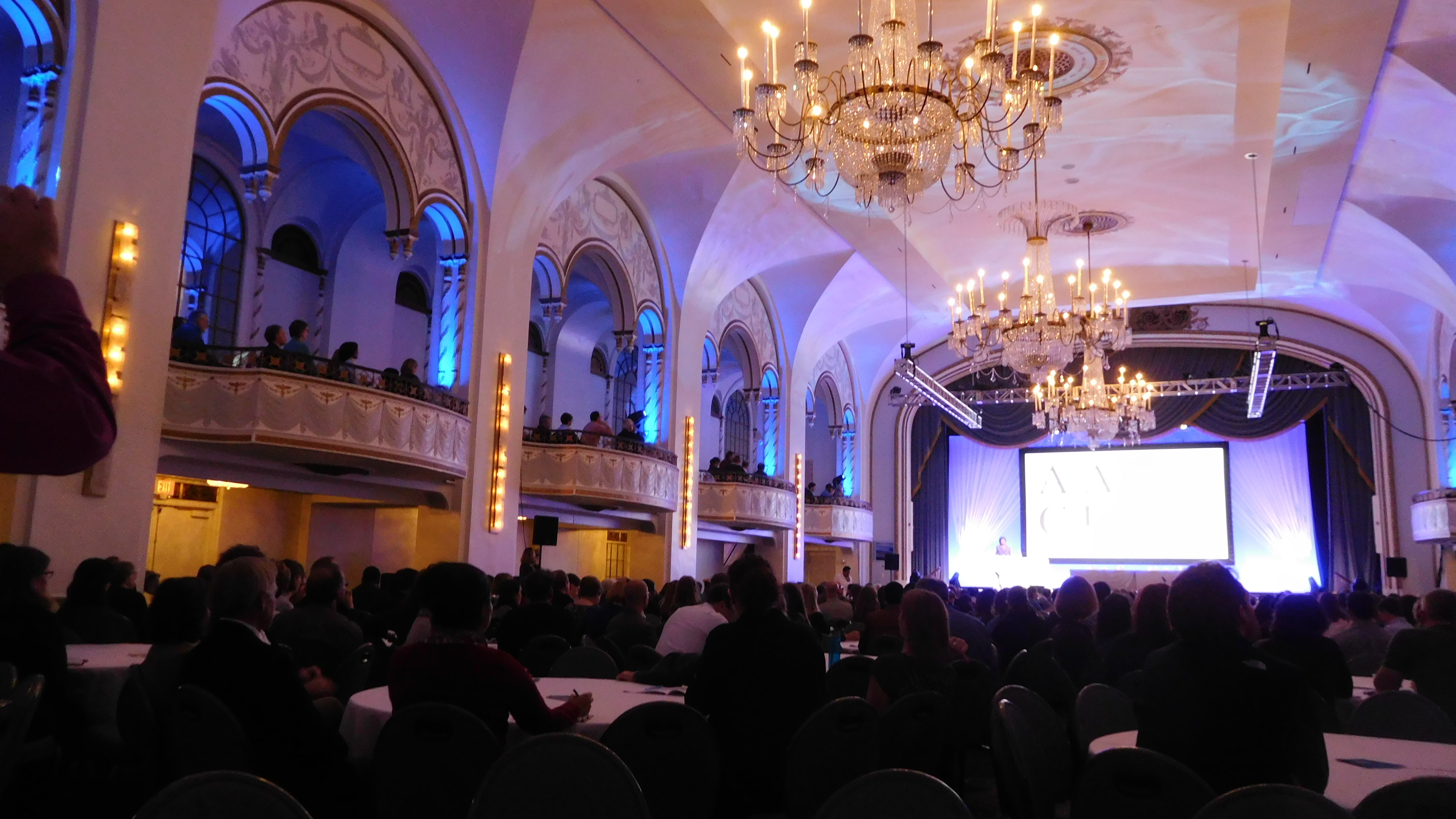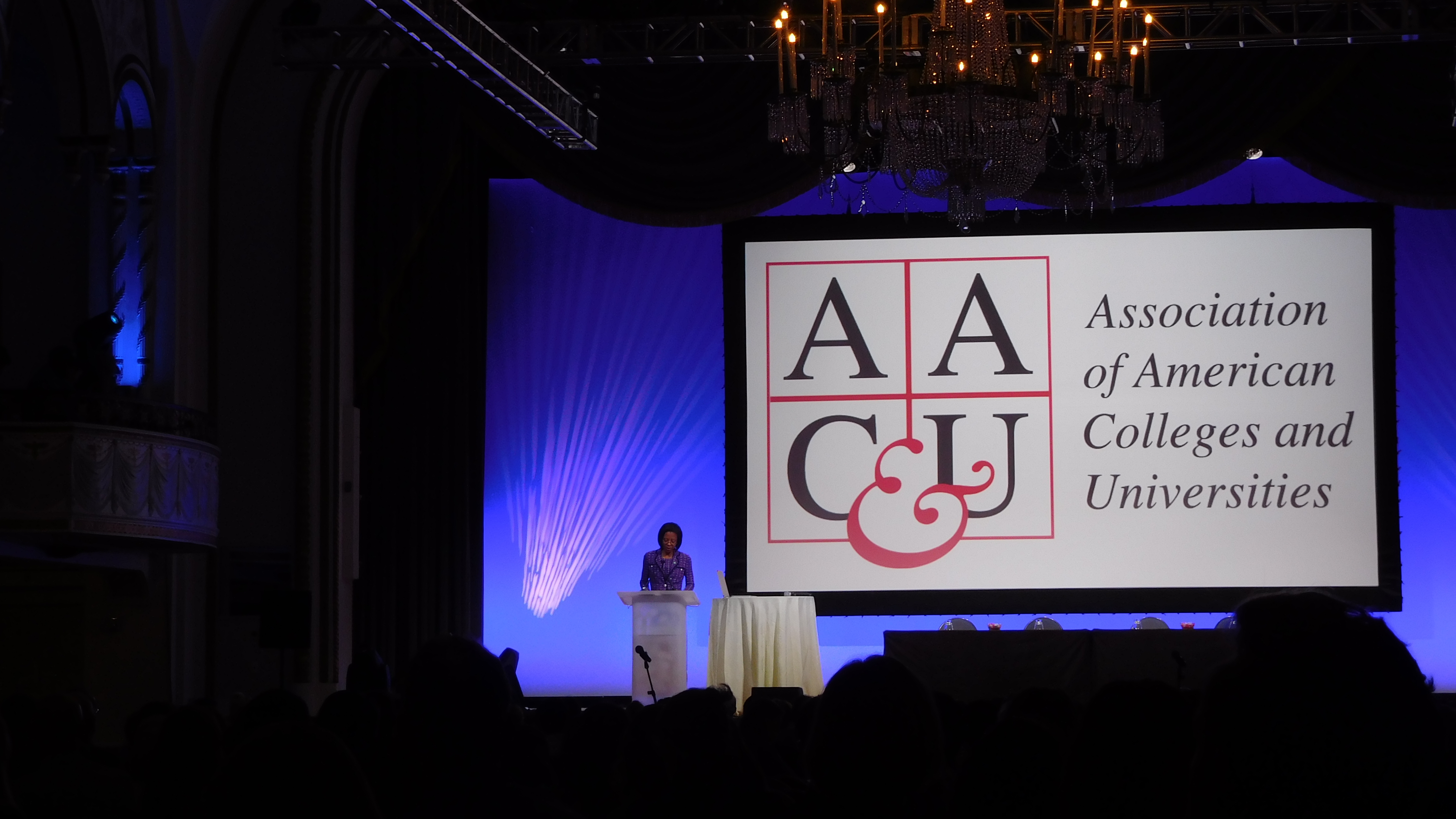Difference between revisions of "AAC&U Conference Boston, Nov 2016"
(→2016 Transforming Undergraduate STEM EducationBoston, MA, Nov 3-5, 2016) |
|||
| (3 intermediate revisions by the same user not shown) | |||
| Line 13: | Line 13: | ||
Dr. Kardia is a leadership development expert who provides coaching, consultation and training for STEM academics on departmental climate, strategic planning, and organizational culture. She has two decades of practical experience working in higher education, solving the most vexing and important challenges facing faculty, staff, and administrators. The first hour of our workshop will include time for community updates and networking. The rest of time will feature a dynamic presentation by Dr. Kardia, with time for questions and answer. | Dr. Kardia is a leadership development expert who provides coaching, consultation and training for STEM academics on departmental climate, strategic planning, and organizational culture. She has two decades of practical experience working in higher education, solving the most vexing and important challenges facing faculty, staff, and administrators. The first hour of our workshop will include time for community updates and networking. The rest of time will feature a dynamic presentation by Dr. Kardia, with time for questions and answer. | ||
</blockquote> | </blockquote> | ||
| + | Attending this workshop gave me a renewed appreciation for Smith, in that many of the issues other universities and colleges are grappling with, regarding conflicts resolution, perception, inclusion of diverse groups, diversity, are issues Smith, as a women's college, has been addressing for a long time. | ||
| + | <br /> | ||
| + | The keynote speaker was [http://mazur.harvard.edu/emdetails.php Eric Mazur], Balkanski Professor of Physics and Applied Physics at Harvard University and Area Dean of Applied Physics. He presented one main idea. Just one. But a good one. That lectures do not work as efficiently as interactive engagement of students with each other, in- and outside class. He is a talented speaker, and got the large audience (300, maybe?) to interact with one another about a very simple physics problem. Everybody attending left convince that 5 minutes of interactions were highly effective, and we will all remember that when a metal plate with a hole is heated, the hole in the plate gets larger, and not smaller. | ||
| − | <br /> | + | What I didn't know and found intriguing, is that he also applies interactivity to the way students read their textbook. The students read the text with a special app which allows them to highlight sections of the text that they do not understand, and add comments, as in any social media app. Other students are encouraged to answer the questions. Mazur reported that a class of 200 students created 66,000 such edits for the text of one of his courses. Students are required to participate and are graded on not only the number of comments (questions or answers), but also on the quality of both. For example "I don't understand this equation" gets no credit. Mazur and colleagues generated an AI algorithm (perusall?) to process the comments and assign grades to the students on the quantity and quality of their comments. I believe automatic grading is becoming an important part of the teaching of CS, and I was both glad and intrigued by what I learned tonight. |
| + | |||
| + | <br /> | ||
| + | A quick Web search revealed [https://perusall.com/ perusall] as the autograding/AI system used by Mazur. | ||
<br /> | <br /> | ||
Latest revision as of 06:47, 4 November 2016
2016 Transforming Undergraduate STEM EducationBoston, MA, Nov 3-5, 2016
I attended the 2016 Transforming Undergraduate STEM Education: Implications for 21st-Century Society in Boston, November 2016.
The Thursday afternoon TIDES workshop was reserved for the recipients of the AAC&U grant for the retention of underrepresented students in Computer Science and related fields. Computer Science, Engineering and Stats & Data Science at Smith are one of the recipients. The workshop organizer was Dr. Diana Kardia of the Kardia Group. Her bio reads:
Dr. Kardia is a leadership development expert who provides coaching, consultation and training for STEM academics on departmental climate, strategic planning, and organizational culture. She has two decades of practical experience working in higher education, solving the most vexing and important challenges facing faculty, staff, and administrators. The first hour of our workshop will include time for community updates and networking. The rest of time will feature a dynamic presentation by Dr. Kardia, with time for questions and answer.
Attending this workshop gave me a renewed appreciation for Smith, in that many of the issues other universities and colleges are grappling with, regarding conflicts resolution, perception, inclusion of diverse groups, diversity, are issues Smith, as a women's college, has been addressing for a long time.
The keynote speaker was Eric Mazur, Balkanski Professor of Physics and Applied Physics at Harvard University and Area Dean of Applied Physics. He presented one main idea. Just one. But a good one. That lectures do not work as efficiently as interactive engagement of students with each other, in- and outside class. He is a talented speaker, and got the large audience (300, maybe?) to interact with one another about a very simple physics problem. Everybody attending left convince that 5 minutes of interactions were highly effective, and we will all remember that when a metal plate with a hole is heated, the hole in the plate gets larger, and not smaller.
What I didn't know and found intriguing, is that he also applies interactivity to the way students read their textbook. The students read the text with a special app which allows them to highlight sections of the text that they do not understand, and add comments, as in any social media app. Other students are encouraged to answer the questions. Mazur reported that a class of 200 students created 66,000 such edits for the text of one of his courses. Students are required to participate and are graded on not only the number of comments (questions or answers), but also on the quality of both. For example "I don't understand this equation" gets no credit. Mazur and colleagues generated an AI algorithm (perusall?) to process the comments and assign grades to the students on the quantity and quality of their comments. I believe automatic grading is becoming an important part of the teaching of CS, and I was both glad and intrigued by what I learned tonight.
A quick Web search revealed perusall as the autograding/AI system used by Mazur.

